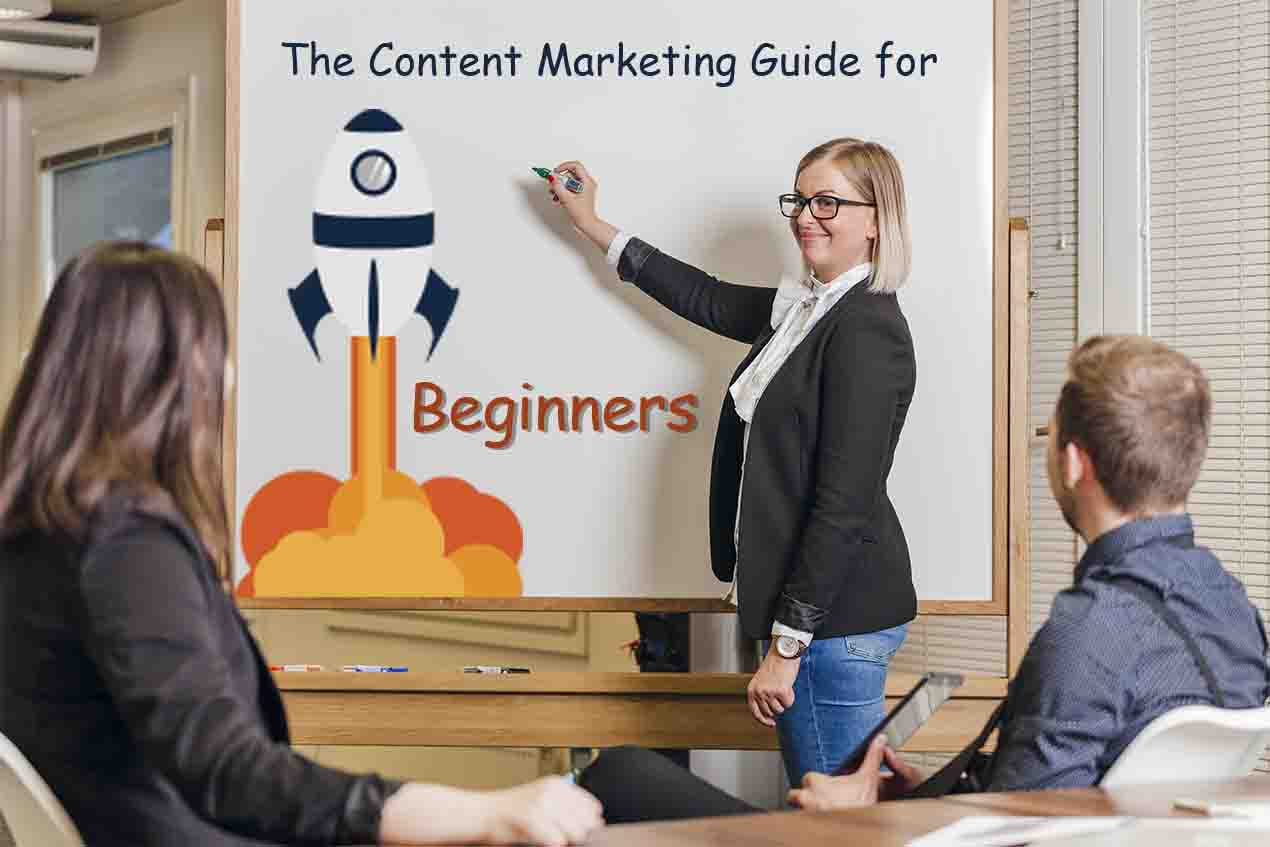Blog Detail
The Content Marketing Guide for Beginners
Marketing Guide for Beginners
Sep 26 2017

Have you read about Content Marketing and already begun to put together some content for your own audience? Do you already have a blog, video series or podcast and want to learn how to take it to the next level?
If your answer to any one of these questions is yes, this beginners’ guide for Content Marketing is designed to help you achieve your Content Marketing objectives. Here, you will find a core understanding of content marketing and its importance for your business to get your business from where you are right now to where you want to be.
Implementing the ideas in this guide will help you start to build a community of fans and followers who not only want to engage with your message but are also willing to share your content with their network. The result is tons of tracks to your website that you can then convert into leads and sales.
Ready to create and distribute content in a more profitable manner?
Good. Let’s get started.
WHAT IS CONTENT MARKETING?
Content Marketing can be defined as creating and sharing valuable and engaging content to acquire and retain customers. The most important aspect of Content Marketing is that it is a form of marketing that focuses on the customer’s needs above all else. As a business engaging in Content Marketing, your job is to empower your customers with content that is designed to educate, entertain and inspire them towards making their own choices.
It is very different from traditional forms of marketing that are pushy and interruptive- only serving to confuse and irritate the customer. According to the Content Marketing Association, when done correctly, Content Marketing can generate up to three times as many leads as traditional marketing at a significantly reduced cost.
WHY CONTENT MARKETING?
The answer is simple.
Content Marketing gives you the amazing opportunity to connect and relate to your target customer in a manner that builds trust. By solving your customer’s problem, you are positioning yourself as their go-to person or business. It goes without saying that it is easier to make a sale when the customer has a relationship with you and trusts you, than trying to sell to cold leads who have never heard of you or your brand.
Now that we know why Content Marketing is vital to the growth of your business or brand, it is time to come up with an actionable plan on how to get started. This planning phase is essential in helping you decide exactly what you want to accomplish with your Content Marketing efforts. Only by knowing where we want to be can we then create a plan to get us there.
THE OBJECTIVE FOR CONTENT MARKETING
What do you want Content Marketing to do for your business? This section will help you see the decisions that need to be made. You may notice that some decisions are easier to make than others. Some may even take a bit of guesswork. As you go through each of the steps laid out below, keep in mind that Content Marketing is like any other marketing strategy - you need to test your ideas to find out what works and what needs a little tweaking.
You can actively follow things from effective content marketing.
- Generate Leads for follow-up sales
- Help your Sales Team close more sales
- Generate Interest in your Products- Marketing
- Public Relations- repair or build a public opinion of your brand or products
- Customer Support
- Develop a Community of fans and followers for your business to engage with
- Become an Authority/ Leader who can influence your industry
DETERMINING YOUR TARGET AUDIENCE
In any kind of marketing, if you target everyone, you’ll hit no one. You, therefore, need to define a niche of the market that you will be targeting. This is a specific group of people who will find your Content Marketing pieces valuable to them.
It is also important that you refine your target audience. For example, “gardening” is a niche that is relatively broad. “Herb Gardening”, on the other hand, is a targeted niche that would make a better target. See if you can narrow down your niche further. For instance, “growing herbs indoors” might be a micro-niche for “herb gardening.” The goal here is to choose as small a group as possible that is also large enough to meet your marketing objectives. Now, on your Strategic Content Planning Template, enter your decision in the “Core Message or Question” box.
It is important to note that a market is not just a type of person, but a group that you can connect with. Therefore, you need to look for signs that your target audience sees themselves as a group of people. Find out where they hang out, what magazines they subscribe to, and what social media sites they use.
Create an avatar, or persona, who represents the average person in your target audience. This is the person you will be writing to. You should never write content to a group; instead, your content should sound like it is written specifically for this one person.
CONTENT CREATION
Your core message is your primary source of content. It will also serve as a guide for every piece of content that you produce. Every topic or idea should support your core message. If they are not related in any way, don’t waste your time on it.
You will probably create categories for your website. The secondary topics we created earlier will serve as the categories. Simply turn each secondary message into a keyword or keyword phrase that can be used as your category heading.
For example, in the Stress Niche, your keyword could be “pain-free stress relief” or “How to eliminate stress painlessly.”
You can create one type or multiple types of content. Your options include; What Specific Types of Content do you want to create?
- Content Creation
- Blog posts
- Videos
- Podcasts
- Webinars and Teleseminars
- Infographics
- White papers and special reports
- Interviews and Speeches
- PowerPoint presentations
- Tutorials and Guides
- eBooks
If you are just getting started with Content Marketing, start with one type of content and then as you gain expertise add another type. But expand your content categories as soon as you can because this is what allows you to cast a wider net across the conversation.
Conclusion
Thank you for reading this guide. It is our hope that it will help you to be successful in your Content Marketing efforts and be able to achieve the objectives you set out to achieve. You now have enough actionable information to start your Content Marketing on the right foot. Take it one step at a time, and you will soon have an audience that trusts you to have the answers. With good content creation, repurposing and distribution techniques, you will have the answers and solutions they need every time.
TAGS
Australia +61 4 7038 7624 India +91 97265 89144
We truly care about our users and our product.






